Are you dissatisfied with your figure, feeling too fat, worried about wide hips, big belly, and not knowing how to dress to look slim and high-class?
Or even if your figure is standard, you can’t wear out your own beauty, and you look fat and short no matter how you wear it? There are also some people with long waists and short legs, envious of other people’s slender legs.
In fact, these troubles are because you don’t know your body proportions and don’t know what kind of clothes to wear for your body type to best modify your figure.
This article will take you to understand the ideal head-to-body ratio, body type classification, body measurement methods, and 9 practical dressing tips to help you become the most shining beauty in the crowd!
Ideal head-to-body ratio and size
The head-to-body ratio of 1:9 is the best, and a head-to-body ratio of 1:8 is ideal. No matter what the head-to-body ratio is, it can be adjusted to the best ratio through clothing matching skills.

Classification of female body types
Why does the same dress look so different when worn on a model, a female star, and you? This is because your body types are very different, and the effect of the same dress on different body types is very different.
If you want to wear your own style, you must understand what kind of body type you belong to before you can make the most of your strengths and avoid your weaknesses.
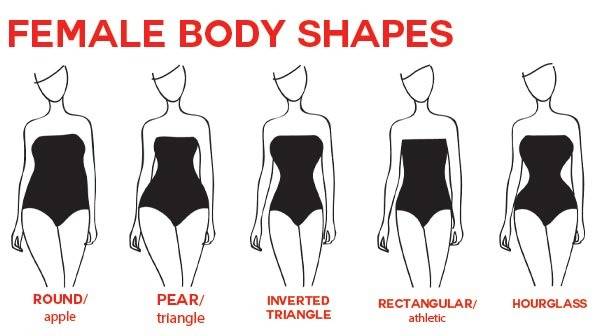
X-shaped (hourglass) body type
How to judge: shoulder circumference = hip circumference = bust circumference, not necessarily exactly the same, as long as the difference is less than 5cm, waist circumference is more than 20cm smaller than these three.
Characteristics: The chest, legs, and buttocks are all well-defined, full where they should be full, and thin where they should be thin, very sexy. The waistline is obvious, and the shoulders and hips are basically the same width.
H-shaped (straight/rectangle) body type
How to judge: shoulder circumference-hip circumference<5cm
Characteristics: The waist-to-hip ratio is not obvious, there is no obvious curve. The width of the shoulders, waist, hips and thighs is similar. It looks wide from the front and flat from the side, and is also described as having no waist.
O-shaped (apple) body type
How to judge: waist circumference>hip circumference
Characteristics: The whole body looks round and round, the lower limbs are slender, the overall body curve is not obvious, and the proportions of the chest, waist and buttocks look more similar. O-type people are often caused by obesity, resulting in excessive chest circumference, waist circumference, leg circumference and hip circumference. The accumulation of fat in the waist and buttocks does not mean that your abdomen must be the widest part of the overall figure.
A-shaped (pear) body type
How to judge: shoulder circumference<hip circumference by 5cm or more
Characteristics: The upper body is smaller, with a narrow back, wide shoulders, a thin waist, and a large buttocks with a lower and rounder buttocks line, and a wider hip circumference than the shoulders. The fat on the body is distributed in the buttocks, abdomen and thighs. It looks thin on top and fat on the bottom as a whole.
T-shaped (Inverted Triangle) Body Type
How to judge: shoulder circumference>hip circumference by 5cm or more
Characteristics: Wide shoulders, thick back, but narrow hips and thighs.
The opposite of the A-shaped figure, the upper body is more bloated than the lower body, which is prone to a top-heavy feeling. Thick waist, high and flat hip line, uneven distribution of fat.
9 Body Shape Issues: Clothing to Look Taller and Slimmer
- Long neck
Not suitable: Too deep V-neck
Suitable: High collar, shirt collar, T-shaped collar, square collar

Source: petitedressing.com
- Short neck
Not suitable: High and narrow collar, half-high collar, piled collar
Suitable: V-neck, U-neck, cardigan
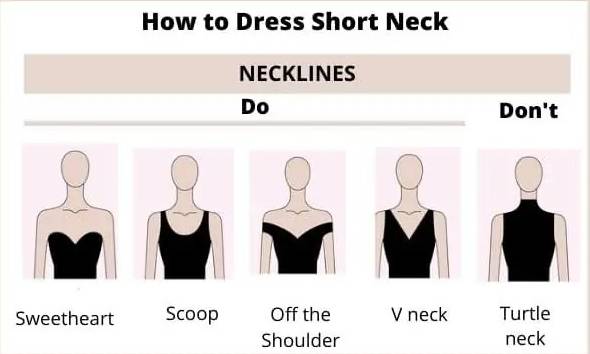
Source: petitedressing.com
- Broad shoulders
Not suitable: Thick shoulder pads
Suitable: V-neck, square neck, slanted shoulder, sleeved tops with shoulder in

Source: petitedressing.com
- Narrow shoulders
Not suitable: Large V-neck, drop-shoulder style, no shoulder line, soft fabric
Suitable: One-shoulder, shoulder pads, puff sleeves, ruffles, vest style, hard-style jackets
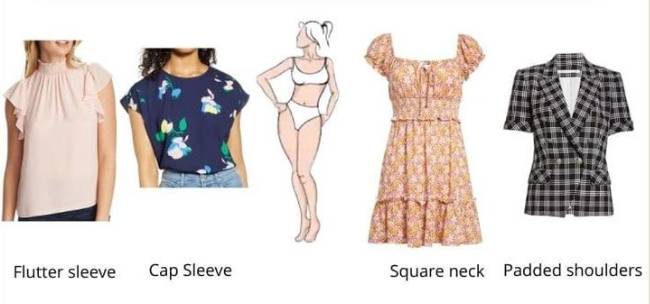
- Big bust
Not suitable: Puff sleeves, high waist and bust line, horizontal clothing, clothing with too many decorations on the chest
Suitable: Small V-neck, U-neck, H-line, regular shoulder T-shirt
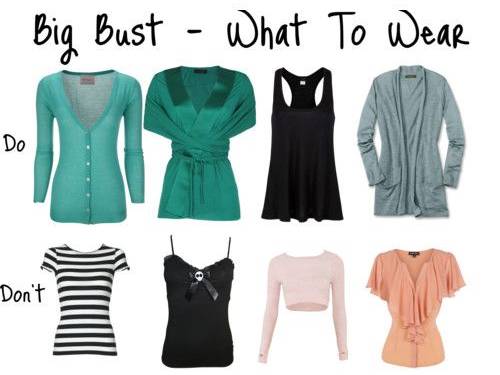
- Well-rounded Buttocks
Not suitable: Pants that are too tight, bottoms with many folds, extra wide-leg pants
Suitable: A-line skirts, fishtail skirts, straight-leg pants, cigarette pants
- Narrow Hips
Not suitable: Pencil skirts, tapered pants, pinstripe pants
Suitable: Full skirts, A-line skirts, flared pants, wide-leg pants
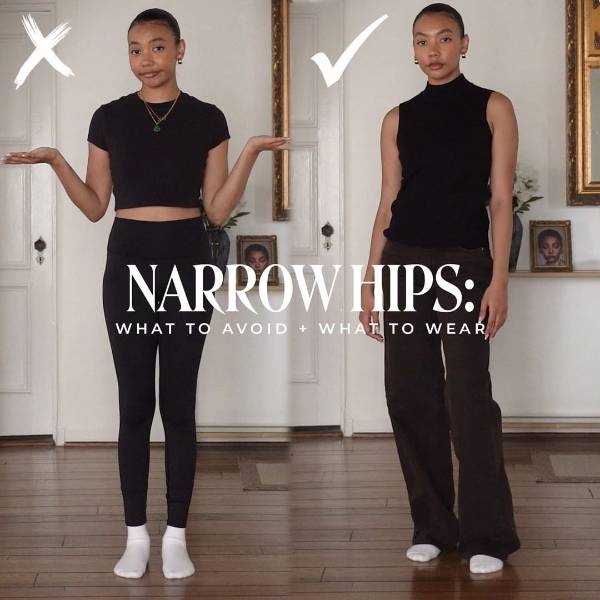
- Long Waist
Not suitable: Bodycon dresses, jumpsuits, pants with good drape
Suitable: High-waisted pants, high-waisted skirts, cropped tops
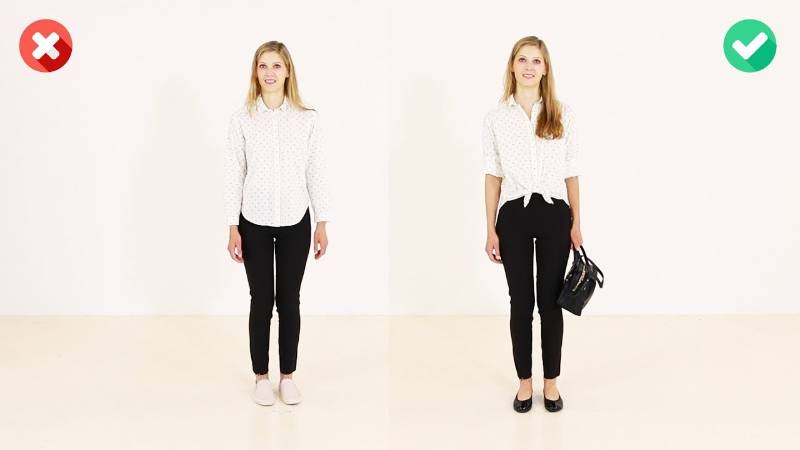
- Short Waist
Not suitable: Super high-waisted pants, bulky and thick tops
Suitable: Crop tops, miniskirts, mid-rise to low-rise skirts and pants, overalls
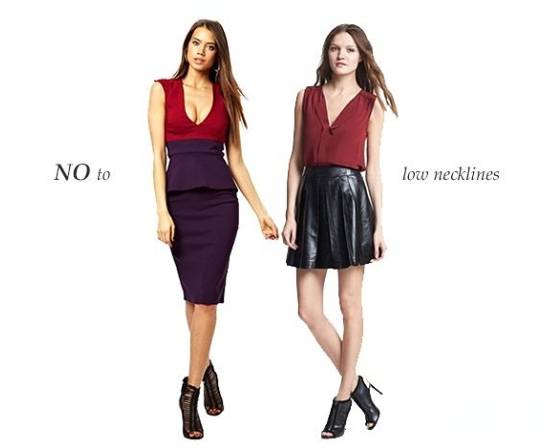
Use Color Wisely: 7 Tips to Look Taller and Thinner
- Stripes for a Slim Look
If you have a little extra weight, wide stripes will make your body curves more exaggerated. Choose subtle thin stripes to hide the puffiness and even have a heightening effect.
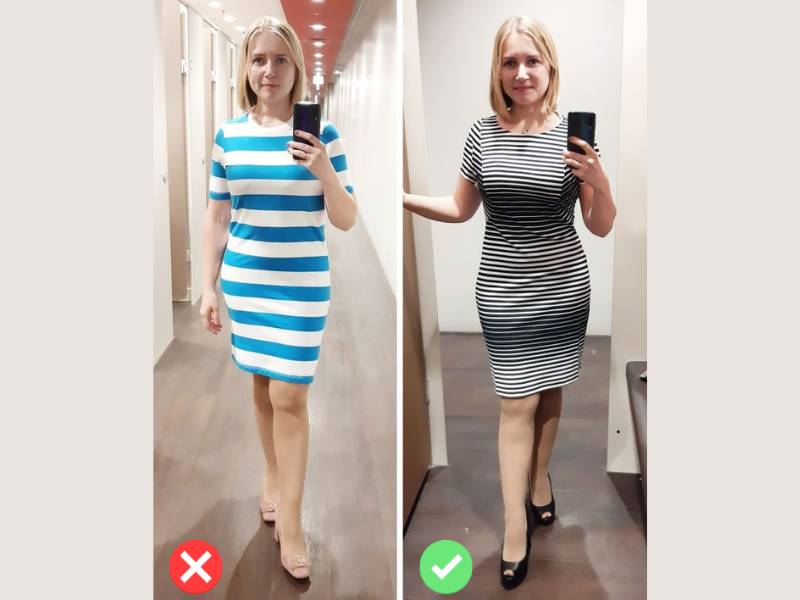
- Color Block on the Upper Body
The accent color is the focal point visually. Placing it higher will make you look taller, and the right proportions will make you look slimmer.

- Color Slimming Techniques
Light colors visually expand, while dark colors visually shrink. However, you don’t need to wear all dark colors or black. Use darker colors strategically on areas you want to downplay.
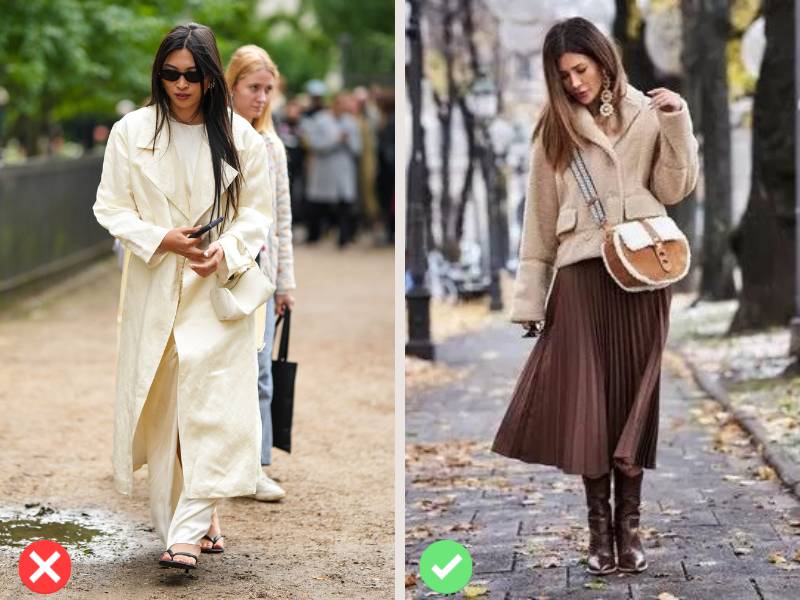
- Color Matching Techniques for Inner and Outer Layers
Wear dark on the outside and light on the inside, not the other way around.
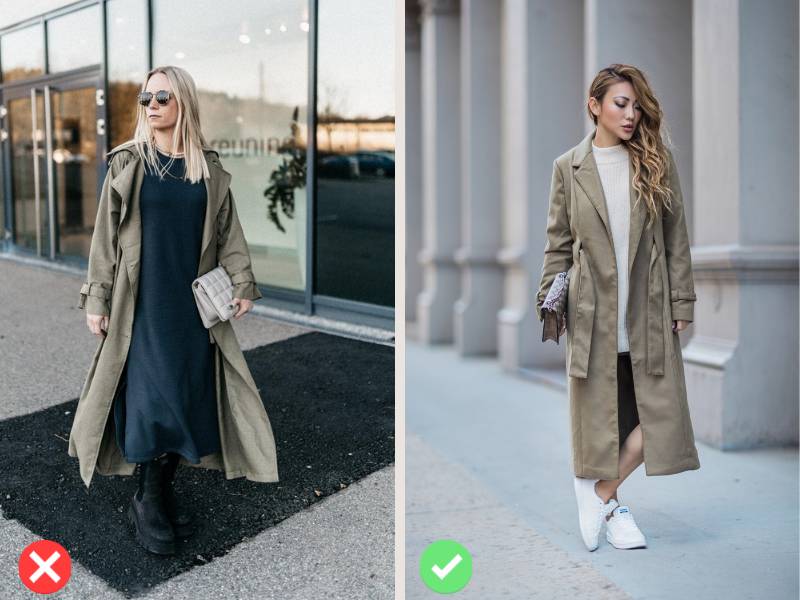
- Inner and Outer Color Contrast: Create a Center Line
A small color difference between inner and outer layers can blur the lines and confuse the eye. The correct approach is to have a larger color difference between inner and outer layers for clear definition and layering.
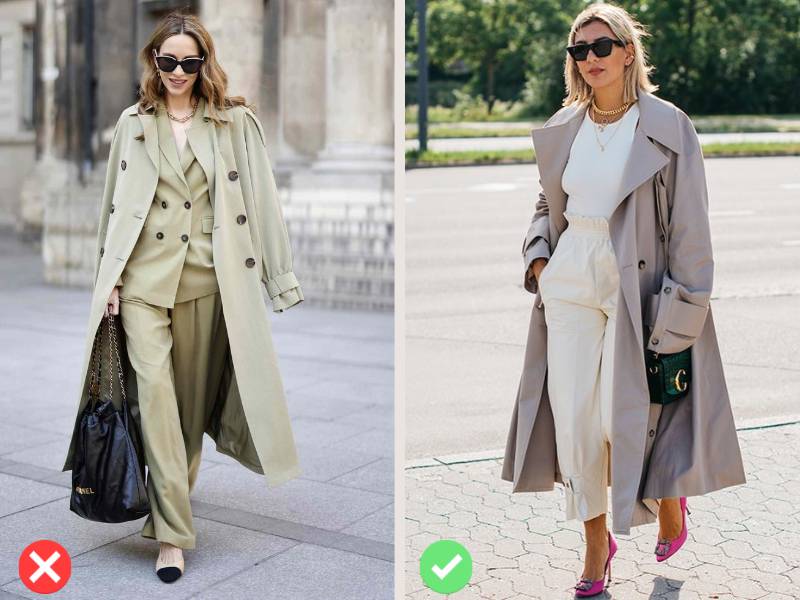
- Slimming Techniques with Stripes + Base Colors
Combine thin stripes with solid base colors for a slimming effect.
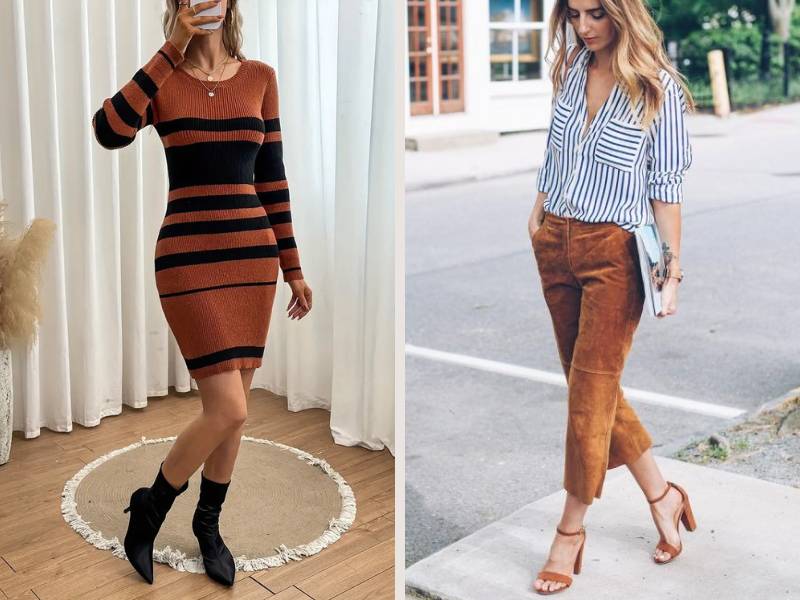
- Color Blocking: Bold Color Combinations
Pair a lighter inner layer with a darker outer layer, or vice versa.

Ready to transform your wardrobe?
- Bookmark this guide for easy reference as you explore different styles.
- Take some time to measure yourself and identify your body type. (We’ve provided a handy guide to get you started!)
- Experiment with different clothing silhouettes and see what flatters you most.
- Most importantly, have fun and embrace your individuality!
Remember, fashion is a form of self-expression. Wear what makes you feel amazing, and you’ll naturally radiate confidence.
Further Reading:
The Strategic Use of Color in Personal Branding
Find Your Perfect Seasonal Color Palette
Mastering Seasonal Color Palettes
5 Easy Steps to Create a Flawless Base Makeup
13 Global Renowned Brands & Their Sub-Brands
